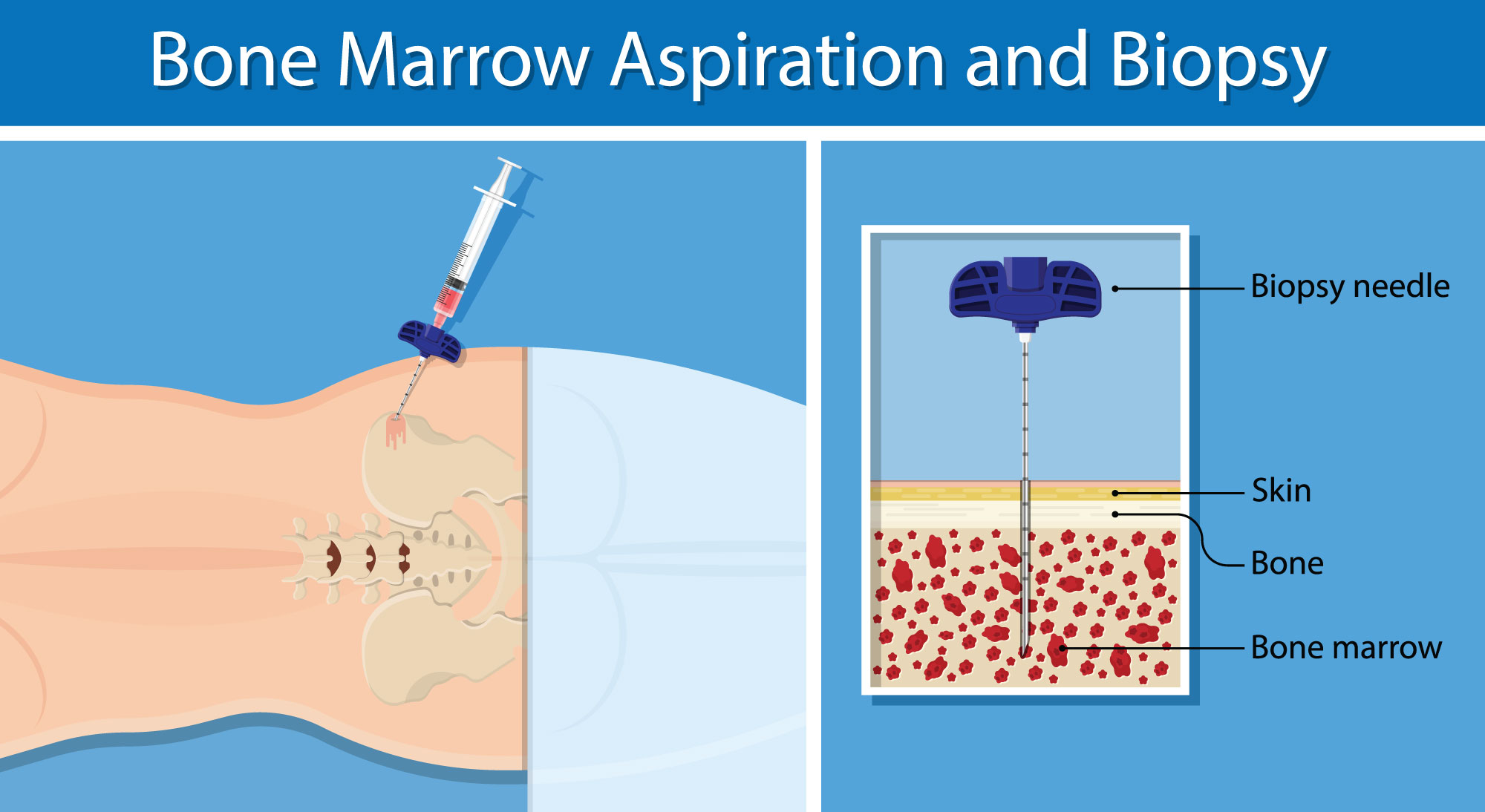Bone Marrow Aspiration and Biopsy
What is bone marrow?
Bone marrow is a spongy substance found inside our large bones, such as the femur (thigh), hips, and ribs. It is made up of cells called hematopoietic stem cells. Hematopoietic stem cells are "baby" cells that become either white blood cells, red blood cells, or platelets. The bone marrow grows and stores these cells until they are needed. Cancer cells can find their way into the bone marrow, making it hard for the marrow to do its job of making healthy blood cells.
What are bone marrow aspiration and biopsy?
Bone marrow aspiration and biopsy are tests to check how your bone marrow is working or to check if you have cancer cells.
- Bone marrow aspiration uses a needle to take a sample of bone marrow fluid from inside the bone.
- Bone marrow biopsy uses a needle to take a small sample of the bone and marrow.
These samples are then looked at and tested under a microscope. This may be done before therapy to check the condition of the marrow or after treatment to check how your body has responded to treatment.
What can I expect during the procedure?
The procedure is done by a provider in your hospital room or outpatient clinic. The area used for a bone marrow aspiration is the hip or breastbone. The area used for the bone marrow biopsy is the hip. You will be asked to position yourself on your stomach or side, so the area can be reached easily. If both an aspiration and biopsy are being done, your provider will likely do both on a hip bone. Your provider will explain the procedure as it is done, but these are the steps, so you will know what to expect:
- The skin will be cleaned with an antiseptic soap, which might feel cold.
- The area where the sample will be taken will be "numbed" with lidocaine. The lidocaine may burn but this feeling only lasts a few seconds. A small needle is used to give the numbing medicine in the area.
- After the numbing medicine has had a few minutes to work, a needle will be placed into the bone, and bone marrow fluid will be taken out with a syringe. You may feel a pulling or drawing feeling down your leg while the sample is being taken. This will only last a few seconds.
- If a biopsy is ordered, it is done right before or after the aspiration by placing a needle into the bone and removing a small sample. During this part of the procedure, you may feel the pressure of the needle and a sharp, sucking sensation as the marrow is pulled into the needle.
- In most cases, the entire procedure takes 20 - 30 minutes. A bandage will be placed on the area after the procedure.
- After the numbing medicine wears off, you may feel discomfort at the needle insertion site. Walking may lessen this discomfort.
Instructions for after the procedure:
- Keep the bandage clean and dry for 24 hours. After this time, you can take off the bandage and bathe or shower.
- If bleeding occurs after your bone marrow aspiration or biopsy, put pressure on the area and call your provider.
- Call your provider if you have pain for more than 24 hours in the area where you had your biopsy or aspiration.
- Call your provider right away if you notice redness or drainage at the site or if your temperature is 100.4°F (38.0°C) or higher.
- Call your provider if you have numbness or weakness in the area where you had the bone marrow or down your leg.
Be sure to ask your healthcare provider if you have any other questions about your bone marrow aspiration and/or biopsy.
